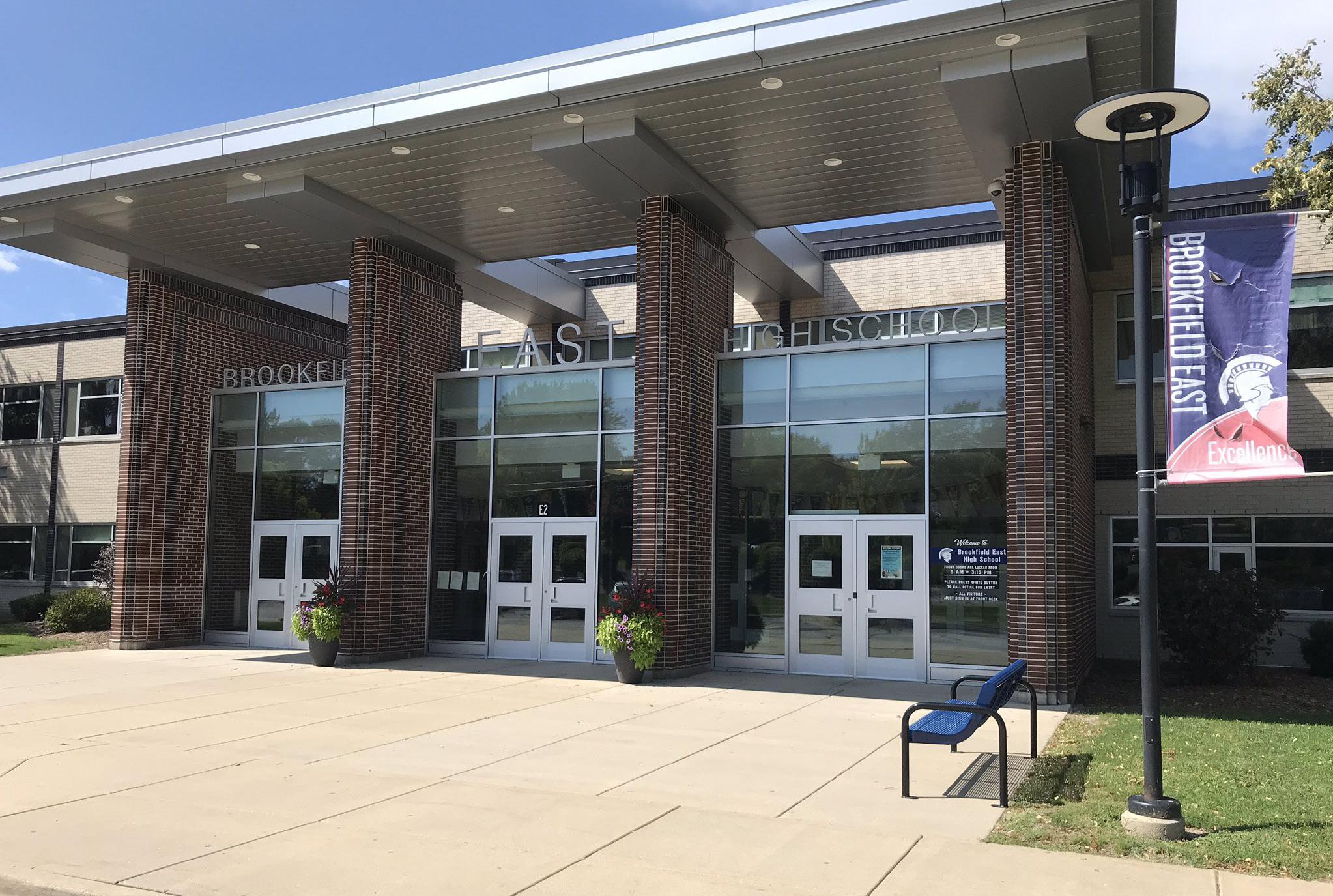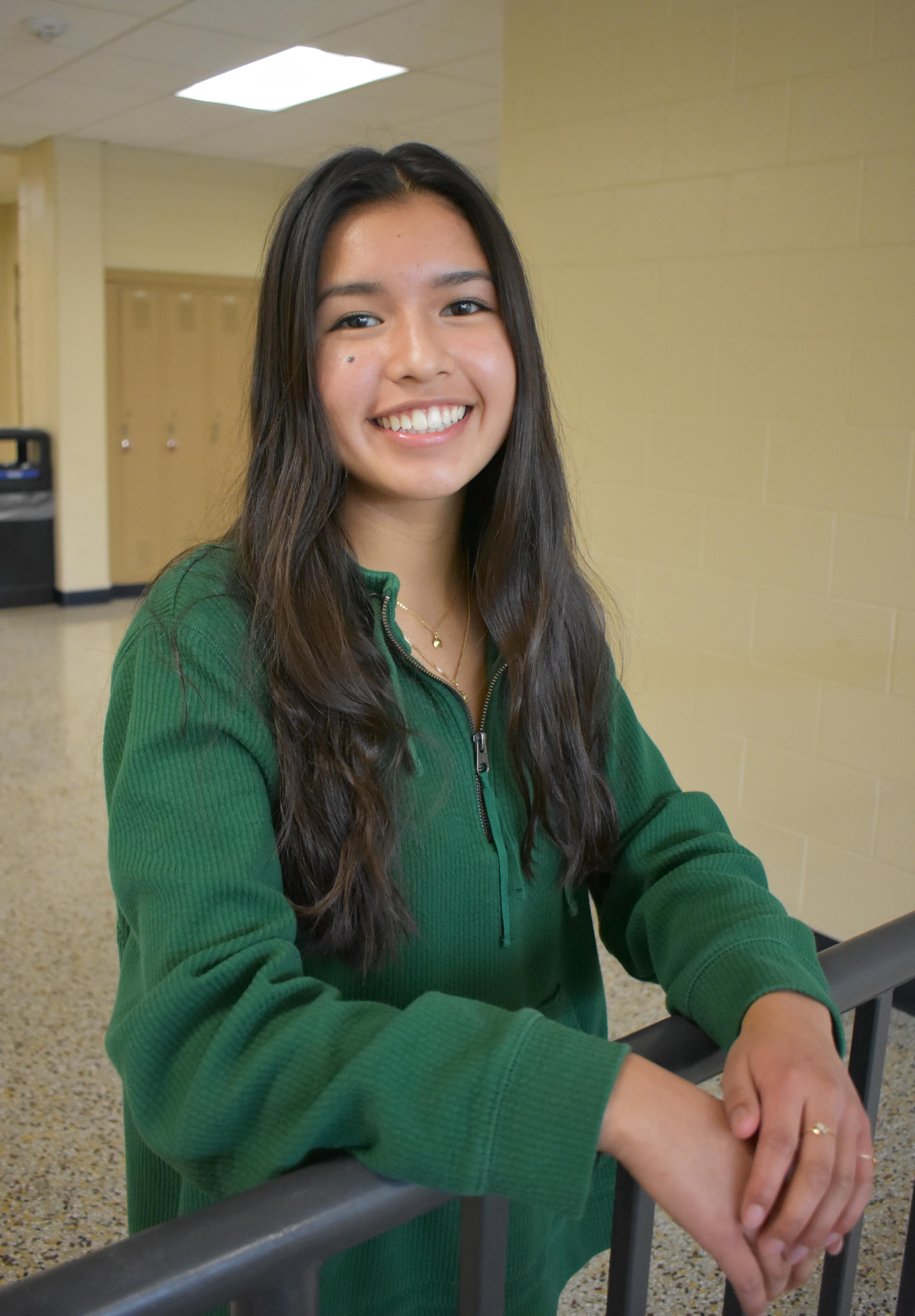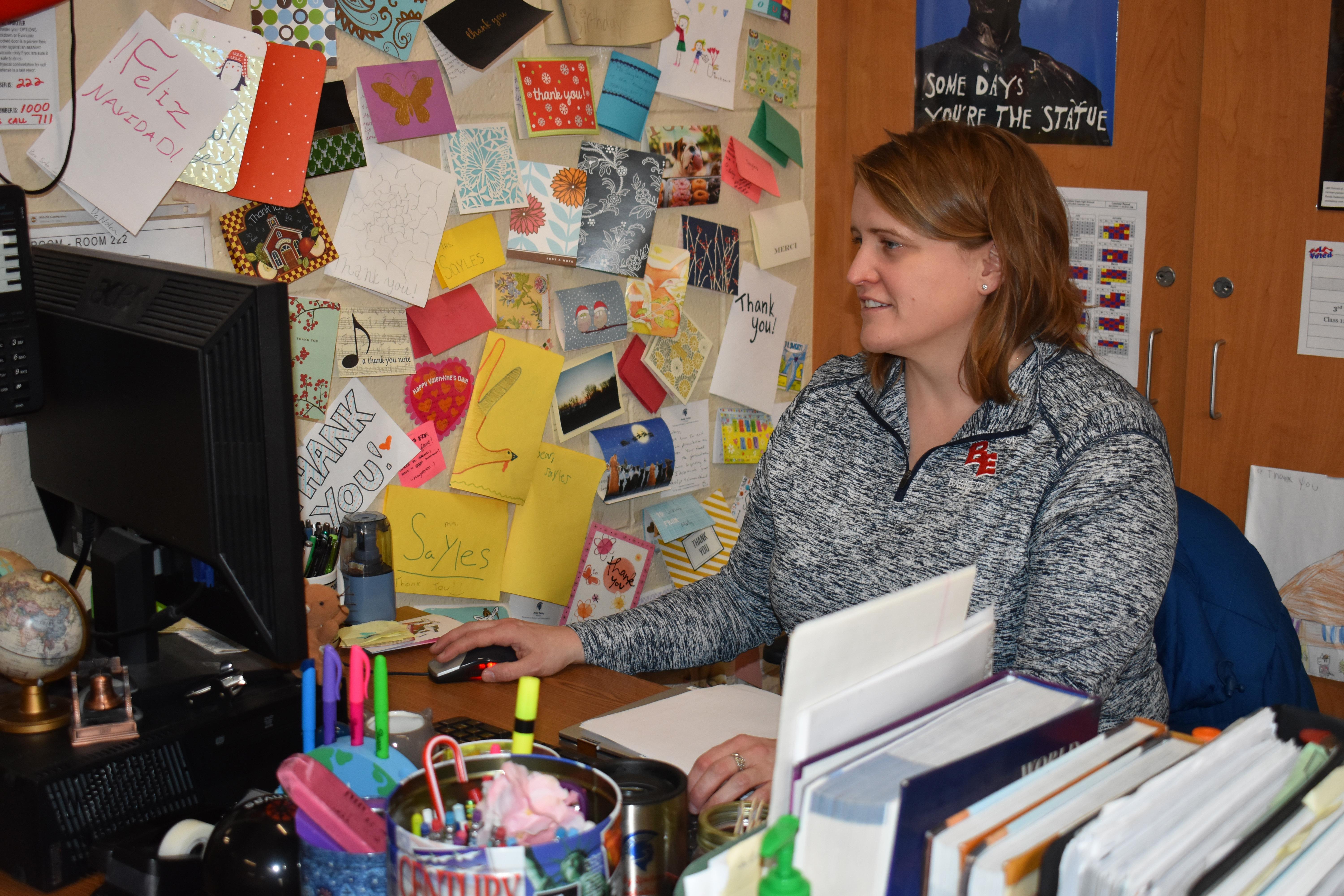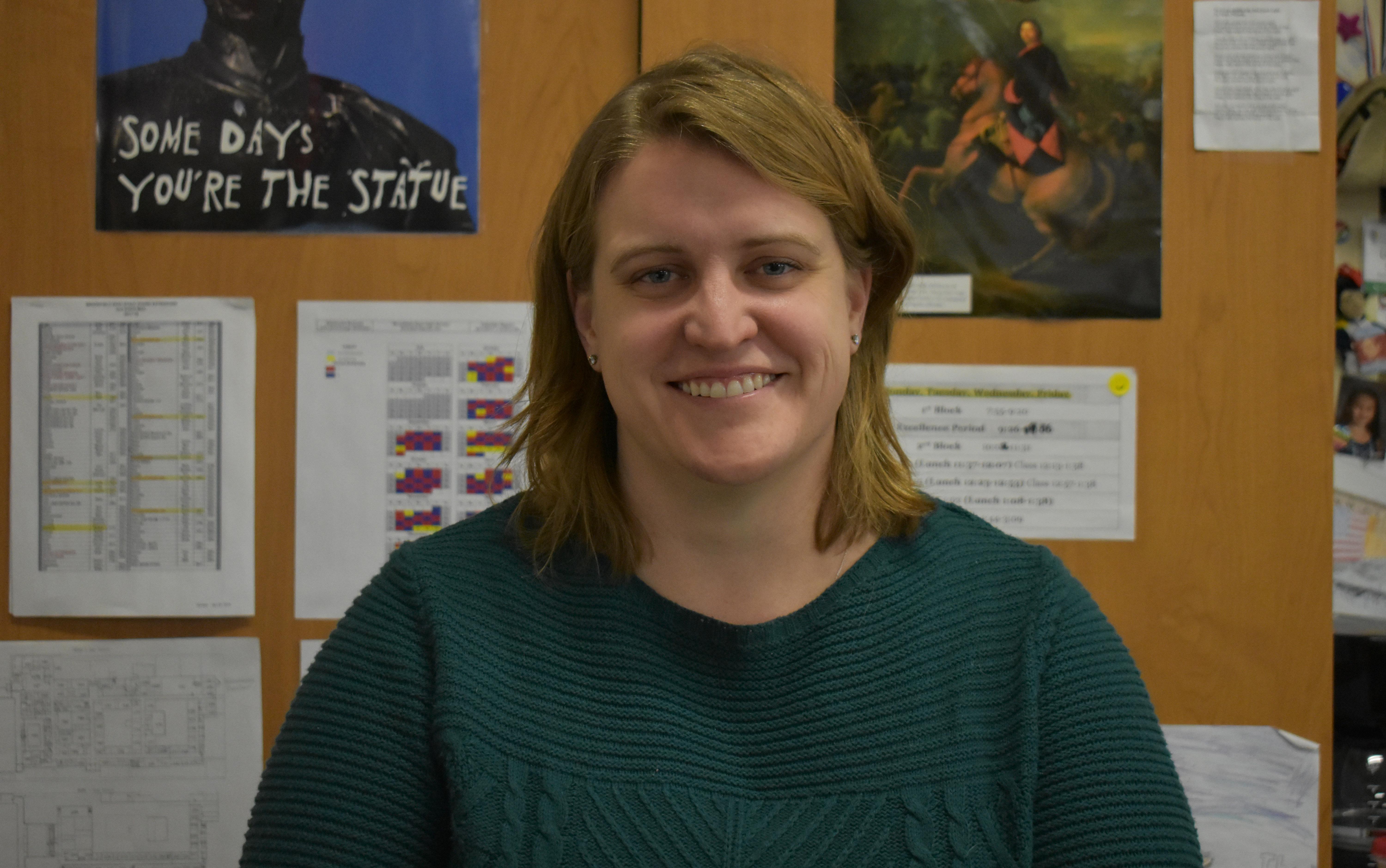
8 minute read
A Culture for Change
B R O O K F I E L D E A S T
A C U L T U R E F O R C H A N G E
Advertisement
• Writer: Jordynn Balducci • Designer: Spencer Harris • Photographer: Erica Chen
With over 20% of the Brookfield East student body descending from a non-European background, many people have noticed a lack of diversity in the social studies curriculum. Today, some are discussing why that needs to change.

For most, freshman year passes in a blur. From beginning to end, it’s a whirlwind of endless confusion between a new schedule, new teachers, and even some new classmates. Some of the only stability amongst the seemingly chaotic experience is found in the single core class that every freshman must take: World History.
The ninth graders file in and sit down in their respective awkward ways on that first day, uncertain about what the next eighteen weeks will hold for them. Unfortunately for some, like junior Aya Galang (11), the experience will be less than satisfactory.
“If we’re talking world history, we should be learning about the entire world,” Galang said. “And that’s not what’s happening.”
A child of Filipino and Peruvian parents, Galang expresses her familiarity with being counted out of the headlines of conversations both in and outside of an educational environment.
Aya Galang is a junior at Brookfield East. She is the founder of HNC, a club promoting the education of cultures all around the world.

“It [is] pretty hard to go on your whole entire life never seeing yourself, not only on television or in the media, but also in school.” says Galang.
“I don’t see myself in the history books, the literature we read, or anything educational despite all the great minds from places I’m from.”
With a total of eighteen different social studies class offerings at Brookfield East, Galang finds it disappointing that none of them have a focus towards cultures outside of European context.
This predicament ultimately frustrated her to a point of action. Galang, along with a group of other students of ethnically diverse backgrounds, have pioneered the formation of a club called History and News in Color (HNC).
“It’s a board of student representatives, all of color, that aim to educate our student body on modern news events that are affecting people of color due to the underexposure in our curriculum,” says Galang.
HNC has put together two presentations so far, both of them having been displayed during Excellence Period, the daily thirty minute block of time dedicated to student choice use.

In their presentations, multiple slideshows are lectured through by specific groups of students whose cultures are currently under-represented by the history curriculum. These groups consist of Latino, Asian, Middle Eastern, and Indian representation.
Topics they have covered during their presentations so far include events like The Congo War and Operation Condor. The powerful sentiment of these slideshows are the first hand accounts shared by the students with family members that experienced these events during their lifetimes.
They take the opportunity to inform audiences that attend about “news” they have lived their whole lives knowing, given that it’s part of their heritage. And although the HNC presentations are currently focused on educating on war in various areas, Galang has plans to shift that in the future.
“I want to take the focus off of tragedy,” says Galang.
“There are some very bright minds, both from the past and in modern society that are overlooked because they are from an area experiencing a lot of violence or conflict.”
With the large group of students in HNC and the even larger group of students attending their presentations, more and more people are beginning to raise questions as to why significant change hasn’t been made yet to the social studies and history curriculum.
One of the World History teachers, Ms. Lindsay Sayles, explained some of the exact factors that have prevented the shift many students are looking for from taking place.
Under-represented groups in many social studies curriculum include: Latino, Asian, Middle Eastern, and Indian.

20% of BEHS is of Non-European descent.
“The main obstacles preventing change have a lot to do with the state making sure everyone is getting the same education,” says Sayles.
The state of Wisconsin has standards set with expectations of information to be taught by each individual grade level. The Elmbrook School District takes these standards with the certain pieces of information the state requires, and with it, they design documents called UBDs, which stands for Unit By Design.
“UBDs are created within groups that combine all levels of teachers within the district, so when they do a curriculum rewrite, they have elementary through high school all come together to determine what’s going to be taught,” says Sayles.
In order to make changes in the curriculum, the staff is gathered for a long and tedious review process of the course content, and must align the progression of information being taught in each grade to the best of their ability. Because of this, there is not a lot of room for changes to be made simply.
“I think it is the exact same world history class that I was taught when I was in highschool,” says Sayles.
“Except for we used to call it Western Civilization, which I think is a more accurate reflection of what the class is. It completely revolves around Europe, which isn’t a true portrayal of World History.”
Despite not entirely having a lot of power to bring extensive change into the current curriculum, Sayles communicates her understanding and agreement with student’s frustration concerning the significant lack of content covering history outside of Europe.
“To make it even worse, I feel like the only time we talk about certain other areas of the world, look at them in the context of when Europeans d o m i n a t e d them rather than celebrating the accomplishments of other areas of the world,” says Sayles.

Multiple classes discuss African history by introducing them in the period in which the Columbian Exchange was taking place, during the era of Imperialism. A few history classes cover information related to the Middle East, but none of them have any in depth units dedicated to Asian history.
To Sayles, the fact that these topics and studies about different areas of the world aren’t amongst the educational requirements is concerning.
“I actually worry sometimes that we’re not fully preparing you for the world youŕe entering,” says Sayles.
“You guys live in an increasingly globalized
Ms. Sayles has been teaching at Brookfield East for nine years. She teaches both core and AP classes, working with students of all grade levels.

world, and the fact that we only teach you our own roots and not the roots of other areas leaves a lot of unknown on the table.”
For Galang, the experience is a little more emotional and personal when it comes to putting heavy attention solely on European history.
“For example, we learn about the Holocaust in great detail, and it’s an extremely tragic event. But taking all the time to study that while completely ignoring similar events that have happened in Asia sends a pretty painful message to those of us that consider it our family history,” says Galang.
“The millions of people that died stack up to an equal amount of horror as what happened with Hitler, but the lack of attention Asian history gets at our school doesn’t project it that way.”
In addition to increasing the representation of Asian history, there are a few additional changes Sayles would wish to see at some point in the future.
“[In World History], we do a reformation unit and teach about Chritianity, but we teach about no other world religions,” says Sayles.
“There’s also pretty much nothing that we teach about the populations native to the Americas; colonizing and killing with smallpox is essentially what the curriculum boils down to.”
Even though there are two classes dedicated to teaching specifically American history (20th Century and AP US History), teachers find it difficult to work information about the native populations into the curriculum.
This is because both classes are heavy on content that took place in the 1900s, after the time period in which the natives had thrived in America. Additionally, teaching about the native Americans would include discussing how they were removed from their original homes, something that does not depict American history in a kind light.
“A lot of public education centers around creating you to be a nationalistic American Citizen,” says Sayles.
With this sentiment comes the fact that the brutality of people like Christopher Columbus is not exposed to students until ninth grade, after they have spent years celebrating him as a hero figure.
“A lot of social studies classes talk about all the good parts of our communities and positive things about our heritage,” says Sayles. “Talking about more truths is something that is definitely on my wish list of change for the future.”
With the next curriculum rewrite not on the schedule until the spring of 2021, staff and students alike have quite a bit of time to thoroughly think through what changes they’d like to see in coming years.
If there’s one thing that’s been clearly agreed upon by both groups, it’s that more information about areas outside of Europe and caucasion history is desired in the standard curriculum.
“Everyone deserves an equal amount of representation in an educational environment,” says Galang.
Whether it be adding more history-based elect-

tives containing a focus on Asian history or altering the curriculum to include more topics that cover religions outside of Christianity, Sayles believes that the the opportunity to make a difference lies heavily in the hands of the students.
“If there are things you want to be learning about that you think are purposeful, I encourage you to use your platform to talk about it, because you are what will drive this change.”





